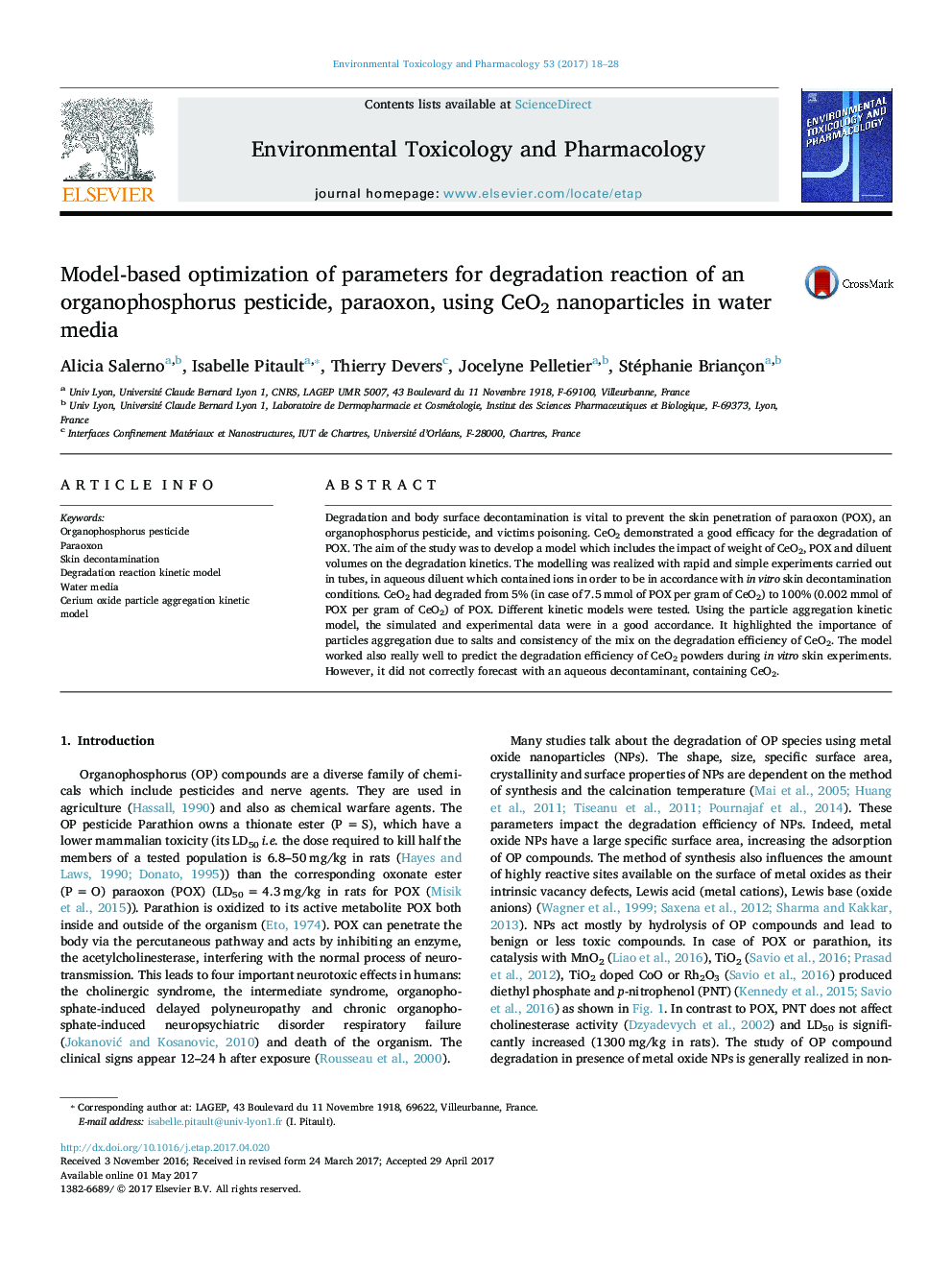| Article ID | Journal | Published Year | Pages | File Type |
|---|---|---|---|---|
| 5559825 | Environmental Toxicology and Pharmacology | 2017 | 11 Pages |
â¢A proposal for Paraoxon (POX) degradation efficiency using CeO2 NPs is showed.â¢The particle aggregation kinetic model simulates closely the experimental data.â¢Salts and consistency promote aggregation of CeO2 particles in water.â¢CeO2 aggregation decreases their degradation efficiency toward POX.â¢Kinetic model predicts POX degradation on skin surface with NPs undiluted in HBSS.
Degradation and body surface decontamination is vital to prevent the skin penetration of paraoxon (POX), an organophosphorus pesticide, and victims poisoning. CeO2 demonstrated a good efficacy for the degradation of POX. The aim of the study was to develop a model which includes the impact of weight of CeO2, POX and diluent volumes on the degradation kinetics. The modelling was realized with rapid and simple experiments carried out in tubes, in aqueous diluent which contained ions in order to be in accordance with in vitro skin decontamination conditions. CeO2 had degraded from 5% (in case of 7.5Â mmol of POX per gram of CeO2) to 100% (0.002Â mmol of POX per gram of CeO2) of POX. Different kinetic models were tested. Using the particle aggregation kinetic model, the simulated and experimental data were in a good accordance. It highlighted the importance of particles aggregation due to salts and consistency of the mix on the degradation efficiency of CeO2. The model worked also really well to predict the degradation efficiency of CeO2 powders during in vitro skin experiments. However, it did not correctly forecast with an aqueous decontaminant, containing CeO2.
